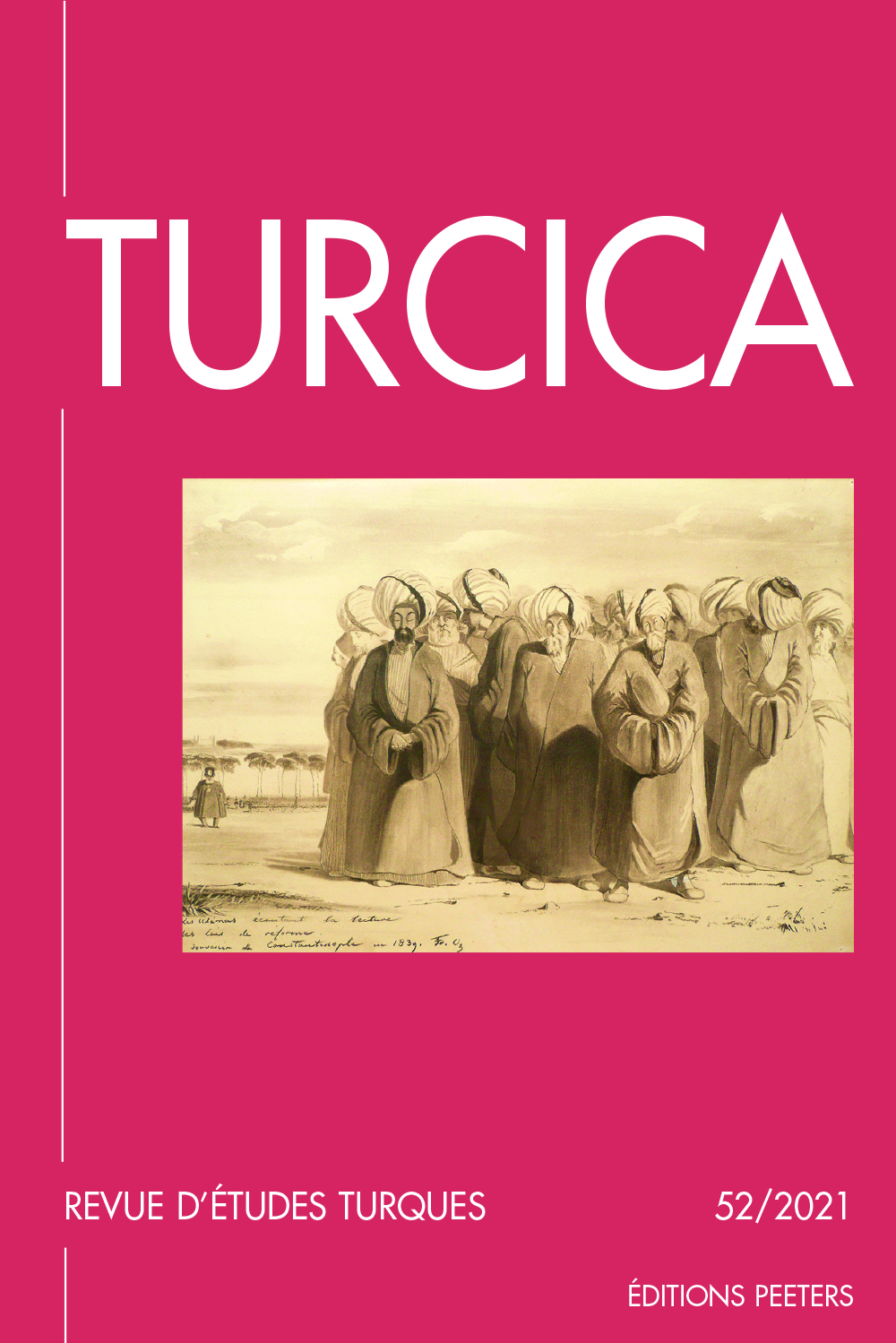 previous article in this issue previous article in this issue | next article in this issue  |

Preview first page |
Document Details : Title: Comment exprimer une éventualité en turc? Author(s): YILMAZ, Selim Journal: Turcica Volume: 40 Date: 2008 Pages: 361-380 DOI: 10.2143/TURC.40.0.2037144 Abstract : L’expression de l’éventualité nécessite l’analyse du système hypothétique d’une langue du fait que les notions comme «potentiel, possibilité, supposition, hypothèse, etc.» y sont impliquées. Dans cette recherche, nous proposons d’étudier ce type d’usage langagier dans le dialogue oral en turc contemporain. Dans un premier temps, nous allons classer nos exemples d’énoncé recueillis d’un corpus oral, en fonction de leur structure morphosyntaxique. Ensuite, nous essaierons d’interpréter les énoncés marquant une éventualité dans le cadre des champs linguistiques de l’intonation et de l’énonciation. Pour ce faire, nous nous servirons bien entendu des tracés mélodiques de chaque énoncé. Tout énoncé sera, en principe, étudié dans un contexte précis tout en établissant un rapport entre morphosyntaxe et sémantique. Cette approche nous permettra de répondre explicitement à la question posée dans le titre de ce présent article. The expression of the eventuality requires the analysis of the hypothetical system of a language owing to the fact that the concepts like 'potential, possibility, supposition, assumption, etc' are implied there. In this research, we propose to study this type of linguistic use in the oral contemporary Turkish dialogue. Initially, we will classify our examples of utterance collected of a spoken corpus, according to their morphosyntaxic structure. Then, we will try to interpret the utterances marking a possibility within the framework of the linguistic fields of the intonation and the enunciation. With this intention, we will surely make use of the melody layouts of each utterance. Each utterance, in theory, will be studied in a precise context while drawing up a relationship between morphosyntax and semantics. This approach will enable us to answer explicitly the question put in the title of this present article. |
 |


